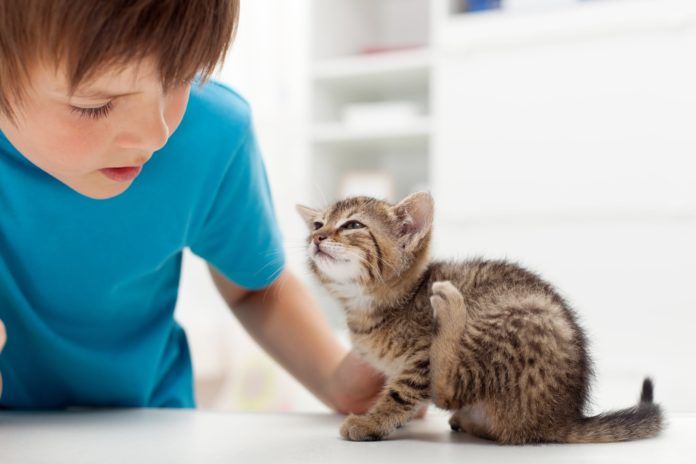© Nagy-bagoly Ilona | Dreamstime.com


As a feline-only practitioner, I look forward to kitten season every year. Nothing brightens my day more than examining a kitten and seeing all of the joy and amusement it brings to the family. I do not, however, look forward to peering inside a kitten’s ear — especially a kitten that’s been aggressively scratching at her ears with a hind paw and shaking her head afterward. This behavior is usually the telltale sign of ear mites.
Ear mites are pesky little parasites that live inside the ear canals. Adult cats can be affected, but they are much more common in young cats and kittens. Because they are contagious, they are often found in cats coming from multi-cat environments, like shelters and catteries. The ear canals are the primary sites where ear mites reside and reproduce, but the mites sometimes migrate from the ear canals to the head, face and neck. (Luckily, ear mites are not contagious to people.)
The signs to look for
The main sign of ear mites is scratching. Some cats will violently scratch one or both ears with a hind foot, and then shake their heads afterward, only to repeat the process repeatedly. Many cats with ear mites will create small wounds around the base of one or both ears. In some cases, cats with ear mites may develop an ear infection with bacteria and/or yeast secondary to the mite infestation. It’s a very uncomfortable condition for the feline patient.
One potential complication of ear mites is the formation of an aural hematoma. This occurs as a result of the violent scratching and head shaking that ear mites can induce. A blood vessel within the pinna (the visible portion of the ear) can rupture from the scratching and head shaking, causing the earflap to fill with blood, resembling a small water balloon. Aural hematomas are uncomfortable for cats, and require surgery to correct.
An easy condition to diagnose
The diagnosis of ear mites is relatively easy. Over time, most cats with ear mites develop a characteristic dry, crusty black ear discharge. Evaluation of a sample of the discharge on a microscope slide usually reveals the presence of live ear mites, and ear mite eggs can often be seen on the microscope slide as well. Cat owners should avoid self-diagnosis because bacterial and yeast infections can mimic the symptoms.
Treatment of ear mites involves administering medication that will kill the mites. Some medications are designed to be administered directly into the ear, while others are applied topically to the skin between the shoulder blades. Over-the-counter treatments are available, but the products dispensed by veterinarians are considerably more effective. The over-the-counter products contain insecticides that will kill the mites, but they don’t kill the eggs. Thus, repeated doses over three to four weeks are usually required to clear an infection, much to the cat’s annoyance.
Topical veterinary products usually call for a single application to the skin, but a single dose may not completely clear a severe infestation. Following up with a second dose two weeks later is much more likely to completely resolve the problem. Because ear mites are contagious, it is recommended to treat all cats in the household — even if the others are not showing signs of infection. Treatment of ear mites is more likely to be effective if the ears are cleaned beforehand, especially if the chosen ear mite medication is one that requires instillation into the ears. Accumulated debris can make it difficult for the medication to penetrate and kill the mites.
The presence of the ear discharge can predispose the cat to developing a secondary bacterial or yeast infection, which is another good reason for cleaning the ears before treatment. In my practice, I have treated a few cases of ear mites where the amount of debris in the ear was so copious that it completely plugged the ear canals and likely diminished the cat’s hearing.
Ear cleaning in vet’s office
Cleaning the ears is usually best done in the veterinary office by a veterinarian or a veterinary technician at the time the ear mites are diagnosed. If a secondary infection is also diagnosed, antibiotics (topical and/or oral) may be necessary in addition to the mite treatment. — Arnold Plotnick, DVM, DACVIM




